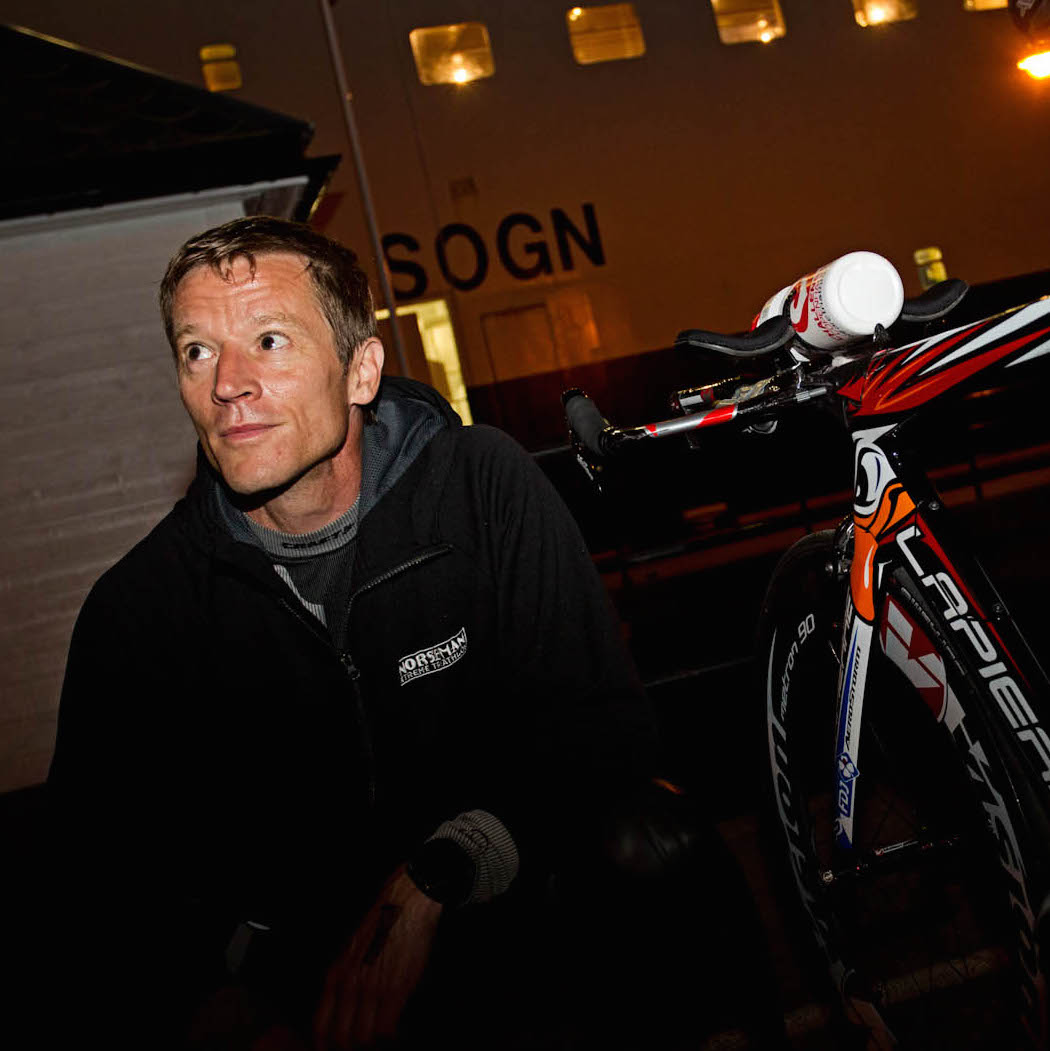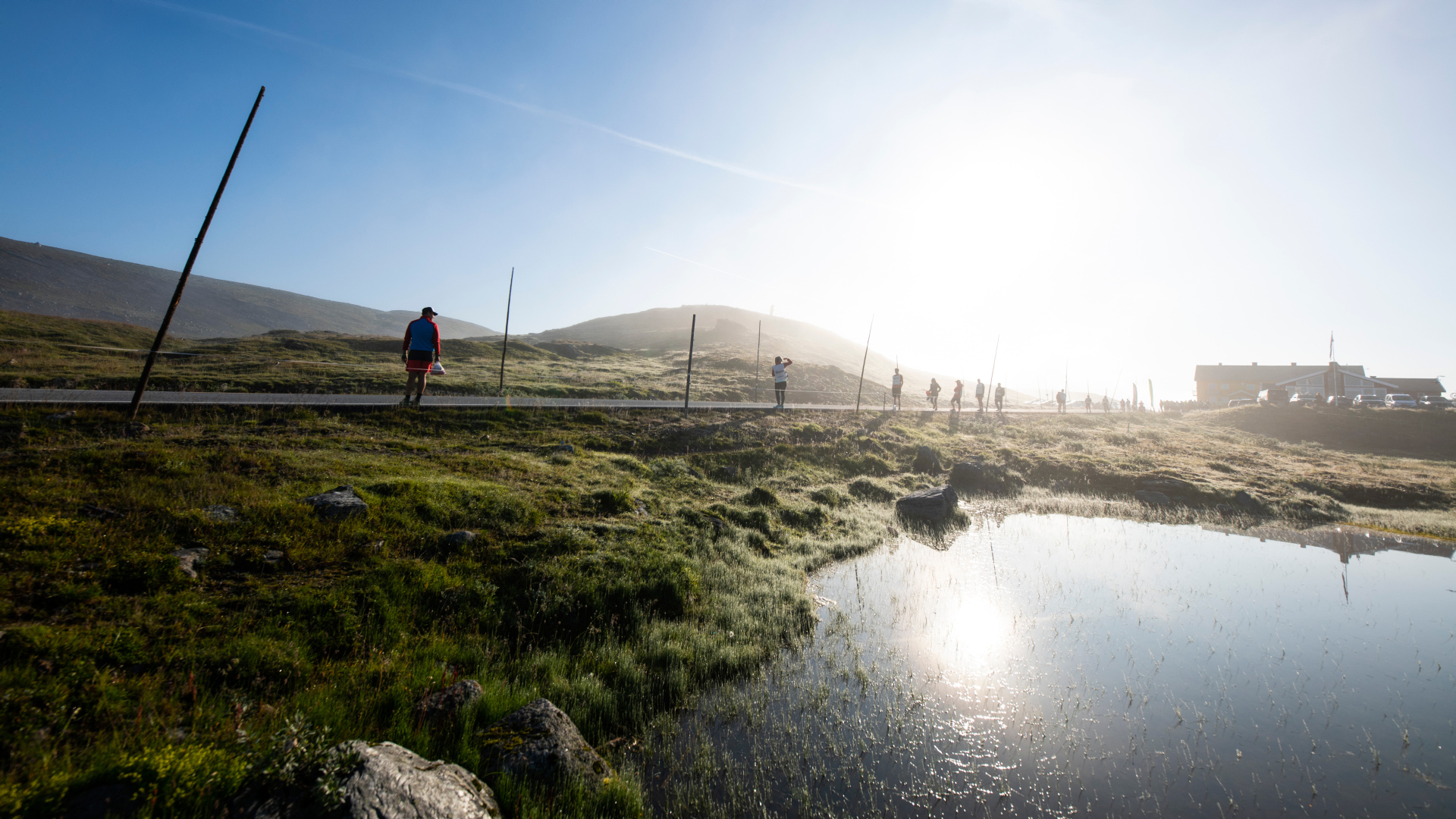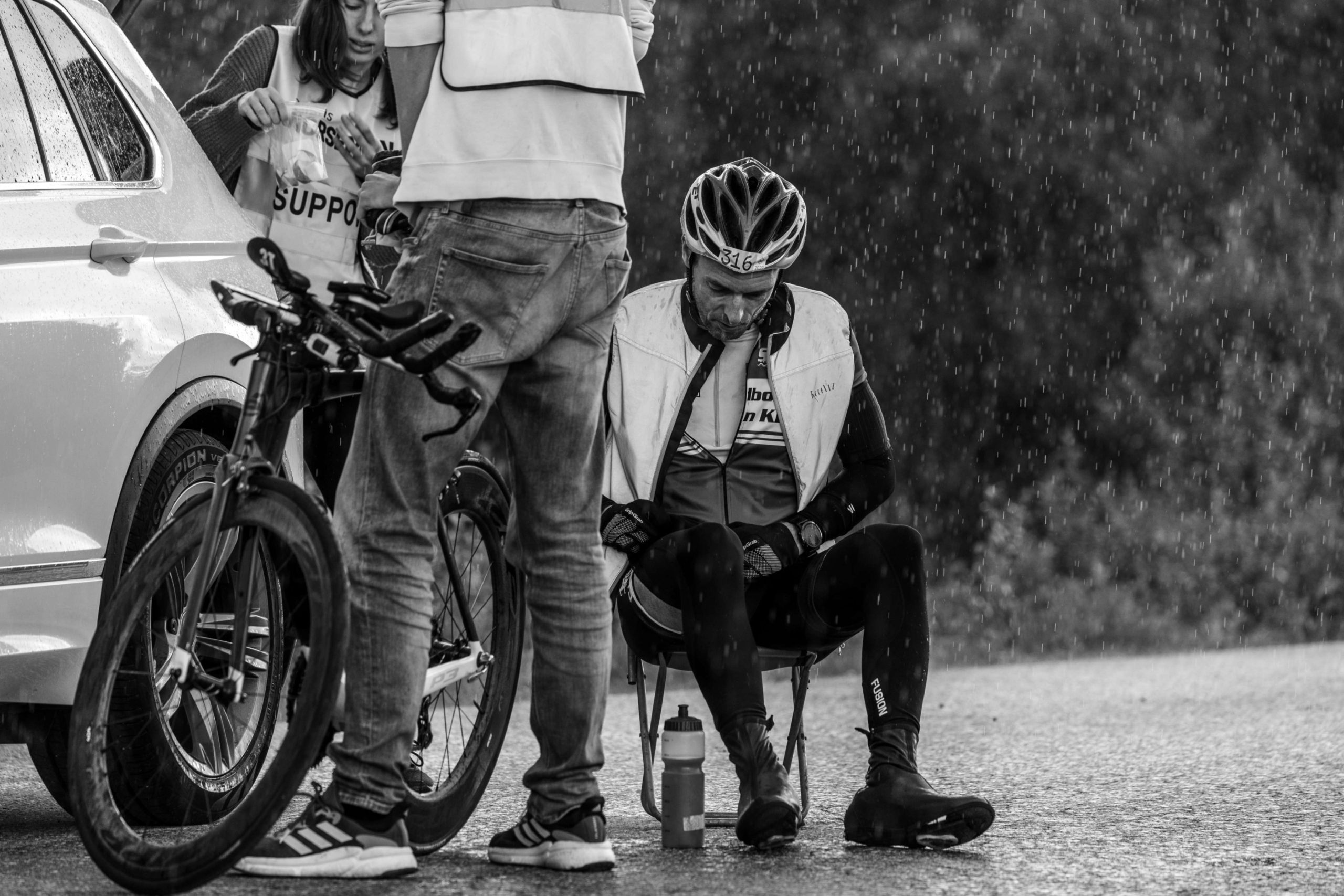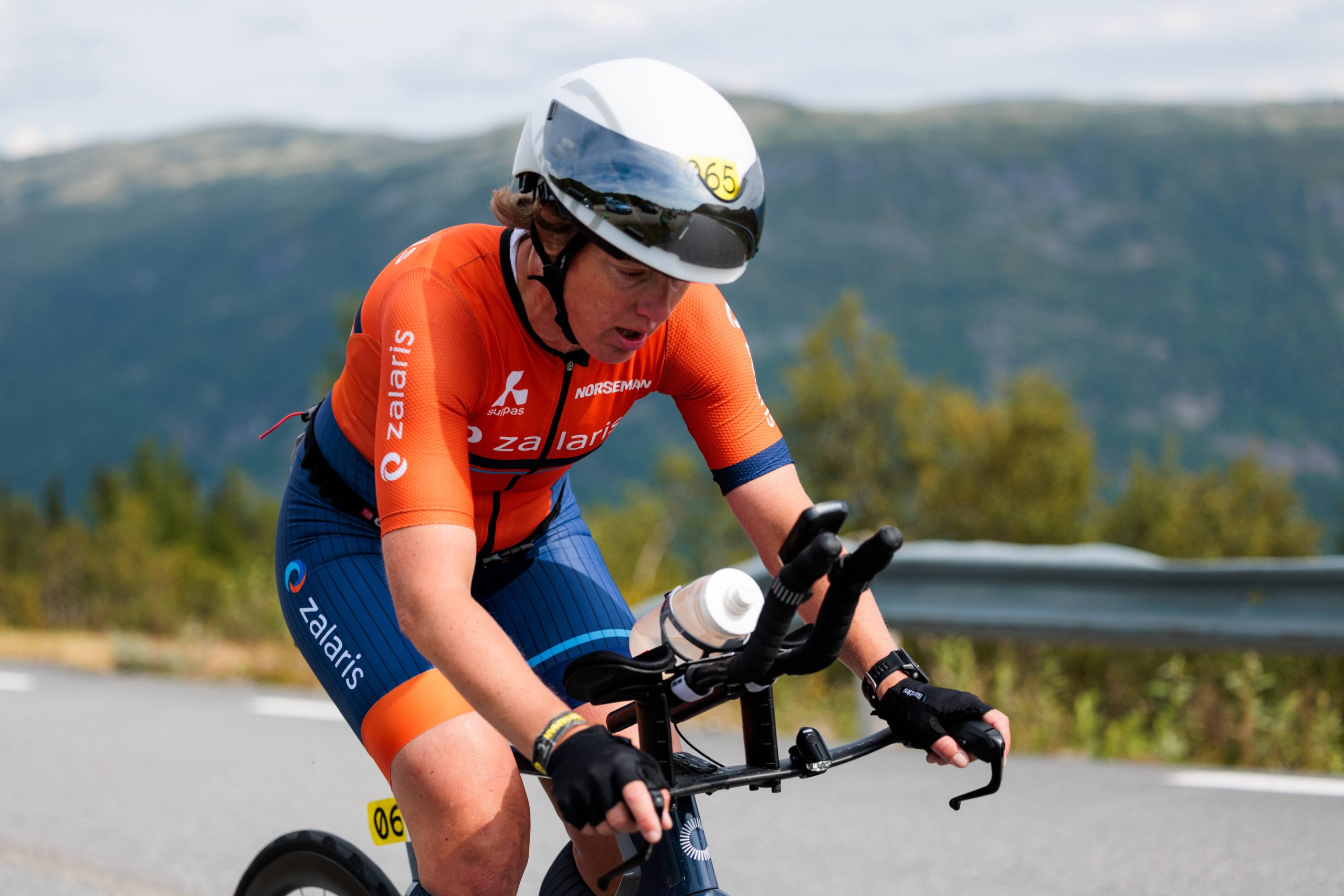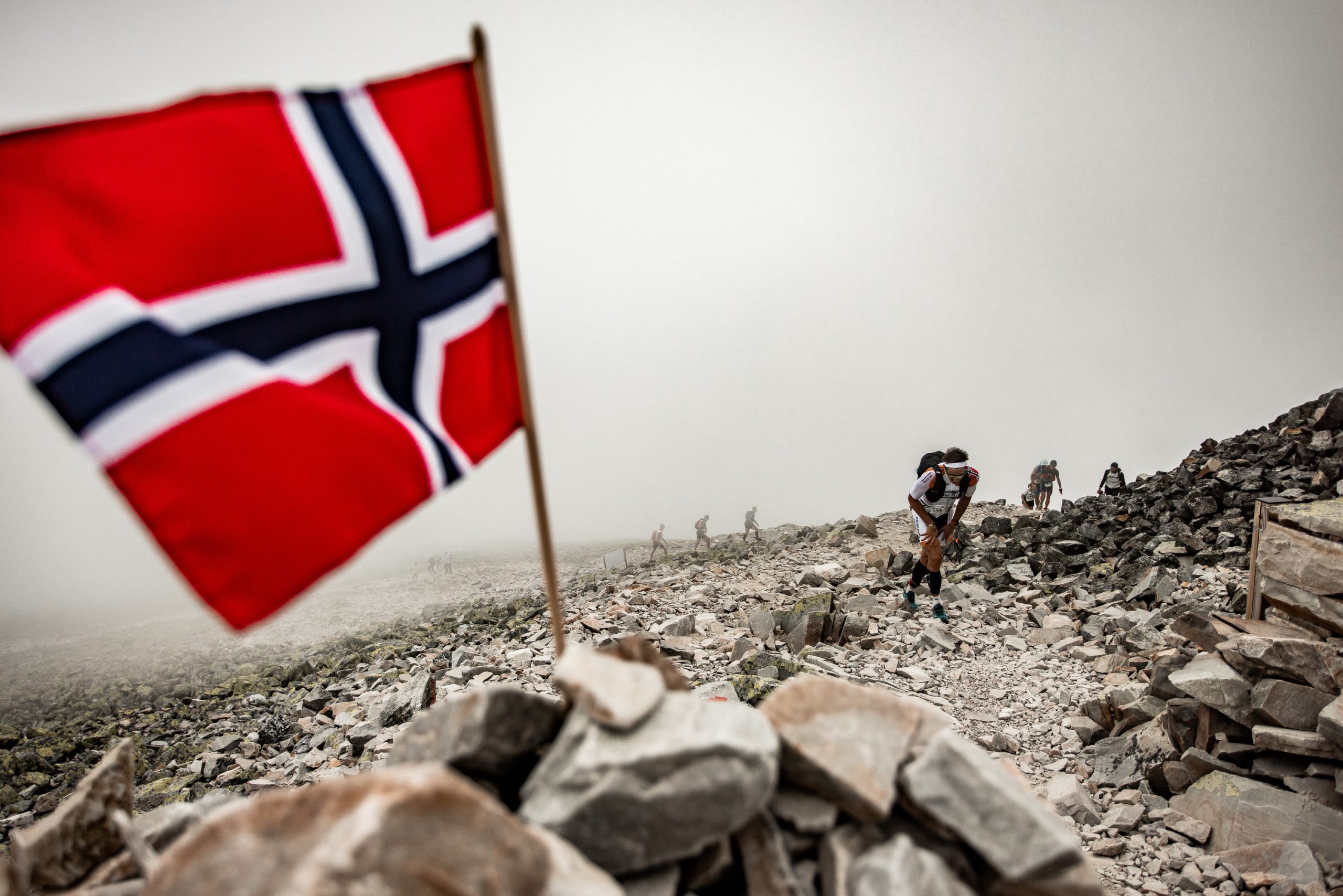How the Norseman Xtreme Triathlon began with founder Hårek Stranheim
Hårek Stranheim is known in the triathlon community for founding one of the world’s most popular and revered triathlons: The Norseman. But what many people don’t know, is that outside of Norseman, Hårek is just a regular family guy who has been enjoying long distance triathlons as a lifestyle for 20 years.
In this short episode you’ll learn these three key things:
- How Norseman came into being
- Norseman’s rise to becoming the pinnacle of triathlon achievements
- How to enjoy the race – whether you get a black or white tee
Listen to the episode on:
- Apple Podcasts
- Spotify ( spotify:show:6EYT3ozFRtBwW59eG3kZpM )
- iHeart Radio (coming soon)
- Spreaker
- Google Podcasts
- Castbox
- Deezer
- Podcast Addict
- Podchaser
Scroll down for the full episode notes.
————
Adelaide: With me today for the first episode of Norseman Radio is Hårek Stranheim.
Everyone knows you [Hårek Stranheim] as the founder of the very special Norseman race, but how else would you describe yourself in the world today?
Hårek: I am Norwegian and live two hours south of Oslo. I’m just a regular family guy, aged 52 and have enjoyed long distance triathlons as a lifestyle for 20 years.
Adelaide: Talking about long distance triathlon, we’d really love to dive deeper with you and get into the nitty gritty of how Norseman began!
Would you describe to us from the beginning, how the journey and creation of the race as it is today came about?
Hårek: Triathlon got some popularity in Norway in the 80’s and very early 90’s, and then the sport completely died out during the second half of the 90’s. In the year 2000, only nine people participated in a long distance triathlon.
I did my first triathlon in Sweden in 1999, after 10 years on the couch and I was completely out of shape! I enjoyed that experience so much, that I wanted to bring a really good event to Norway.
Since the sport had a broken neck here, I thought that the best way to bring it to Norway would be to have a proper event!
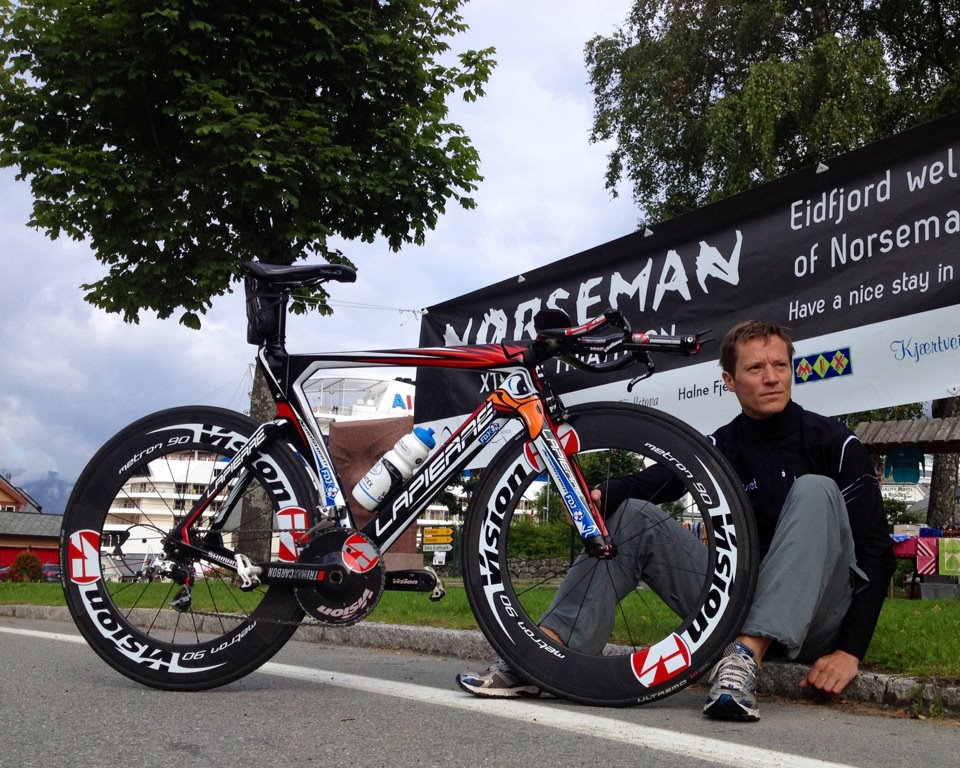
So I started to look for places where I could start an event that could be as great as the one in Kalmar, Sweden, which is currently Ironman Kalmar.
Ironman Kalmar is situated in a beautiful little city with good people, it’s flat, has warm waters and the weather is always nice. I’ve done that race four times and it’s such a great place for a triathlon. We don’t have any places like that in Norway. I would say that you can’t find one single place in our country that could be compared with Kalmar in Sweden.
I did spend some time trying to find this place in Norway, where we could have a fast, typical triathlon event, just like the others. So when it was totally impossible to find that place in Norway, it was quite easy to decide that we should do something completely the opposite of the normal fast, flat, comfortable, warm, nice triathlons!
With that idea, it was actually quite easy to find a few alternatives. The best idea was to swim in the Hardangerfjord, because it is not too far north. I thought the water going further north than Hardangerfjord would be too cold.
Since I live in the county of Telemark, a couple of hours south of Oslo, I really wanted the race to end at the top of a mountain and the most beautiful mountain in Norway is Mount Gaustatoppen, my home mountain.
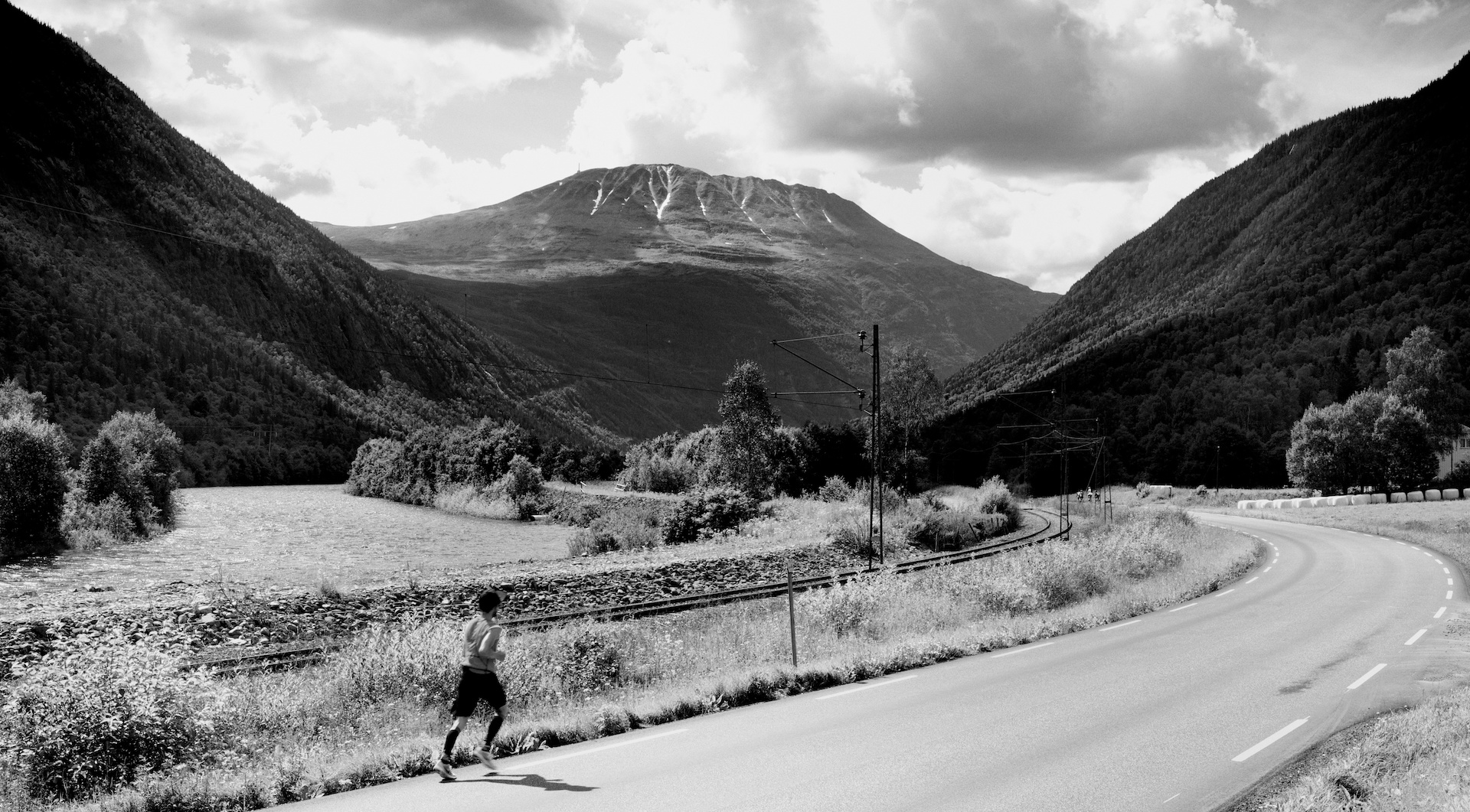
It actually didn’t take too much time playing around on the map, to find that the obvious track for Norseman would be from Hardangerfjord at the little spot called Eidfjord, going across a mountain plateau and ending up at the mountain Gaustatoppen.
Adelaide: What feelings did you experience when you realised that the exact distance from Eidfjord to Gaustatoppen was the full triathlon distance?
Hårek: Well this was before Google Maps and I’d never been to any of these places before, so we didn’t know if the route would work!
I actually thought the route would be far too short. So when we measured the track and found it fitted absolutely perfectly with the 180km cycle and the 42.2km run it was amazing. It was like this event was given to us by someone!
It was like this event was given to us by someone!
Hårek Stranheim
Adelaide: In England and with events like swimrun, a lot of these great ideas come from when you’re drunk, you’re in a pub and you’ve got the map splayed out. Would you describe to us the setting for the creation of Norseman or the realisation that the distance was perfect?
Hårek: We were out with very high quality measuring equipment. My friend Frederick completed the full 180km bicycle race with this equipment. We then came to the beach, where we now have T2, and it was such a beautiful place! I’m still freezing on my back from the moment when we realised that it fits perfectly to have T2 at this beautiful place, with an amazing view of the lake and it’s just perfect!

From here it was the run leg and we used the same equipment for the first 37km up to where you start to walk into the mountain at the path. The same Frederick completed the measurement of the last 4km alone with a rope! I think the rope was 25m long and there were lots of people walking in the mountains disturbing him, so it took him the whole day to measure it! It turned out to be perfect as well.
Adelaide: Once you had the measurements all finalised and you realised it was the perfect distance for a full distance triathlon race in the Norwegian mountains. How did you then get the first ever official Norseman race up and running?
Hårek: Theproper measurement happened a few weeks after the first year. So we didn’t really know that it was perfect when we were doing the first race!
Adelaide: So can you tell us about the creation of the first race before you’d measured it? Having now spoken to one of your first participants and now crew member, Clive, he says that you coerced, persuaded and lied to him, saying that it would be a really fun social race, which he might argue it was not…!! So how did you get to that moment to having that many people on the start line?
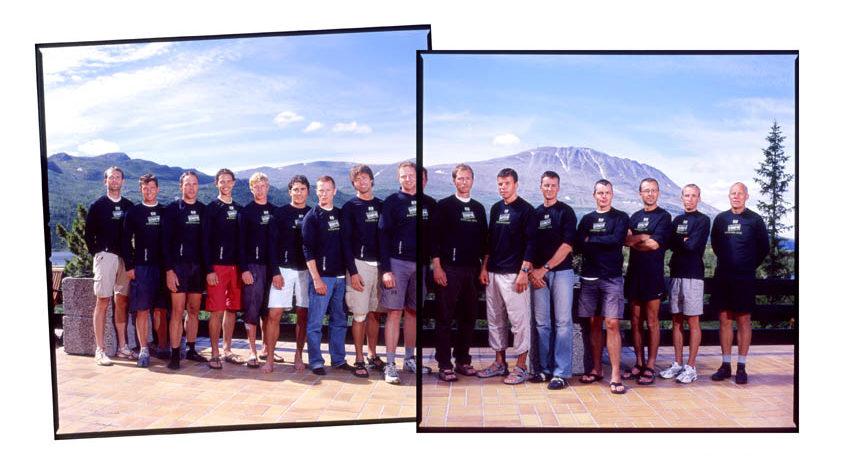
Hårek: 21 people were on the start line in the first year and I spent a lot of time trying to recruit people to join me for the first race, as there were no or hardly any triathletes in Norway! It was not easy to find them. I even visited people’s homes, who I didn’t know, trying to persuade them to join us for the race.
That’s always the boring part when you’re trying to start an event. You spend so much time trying to recruit participants, which also continued for the next 2 or 3 years. But since then it has been very easy to recruit participants for Norseman, obviously!
Adelaide: What did you tell people for the first race? How did you persuade them?
Hårek: I think I just told them whatever it took to persuade them to join!
For Clive, I told him that it was going to be a very sociable group ride, it was not a race, just friends doing a swim, riding the bike together and taking photos and being sociable, and so on. This made him join us, which was good, but I wasn’t really lying to him, I was just quite flexible and agile about how this should turn out. I knew what kind of race I wanted to start, but how you get it going is more complicated. It took some slight lying I suppose!
I wasn’t really lying to him, I was just quite flexible and agile about how this should turn out.
Hårek Stranheim
Adelaide: How did it feel to you cross Gaustatoppen for the first time?
Hårek: Well I did the race myself and it was a very small organisation. So when I arrived at the finish line, I sent the rest of the organisation back down to the hotel and took over from them welcoming the rest of the athletes that were behind me.
We also had the National Broadcasting with us the whole day. They were following me and the same friend Frederick, so it was actually quite exhausting – not only doing the race myself, but also organising it and having the National Broadcasting around us all day.
But it was excellent! The people were happy doing it and it was a good atmosphere the whole day.
Adelaide: When did you know that you wanted to continue to hold the event?
Hårek: I was very convinced that this race would be a great success. I tend to be very optimistic about things, so I spent a lot of time preparing for and organising the event two years before it first happened, even thou it was so small. So I wasn’t surprised when the first year was successful, because it was exactly what I’d hoped for.
Adelaide: Was it then easier to recruit people for the second race?
Hårek: The following year we had 90 people participating, including Rune Høydahl, who was a newly retired mountain biking world champion and a national hero. Rune just popped in and wanted to do the race. That was such a scoop!
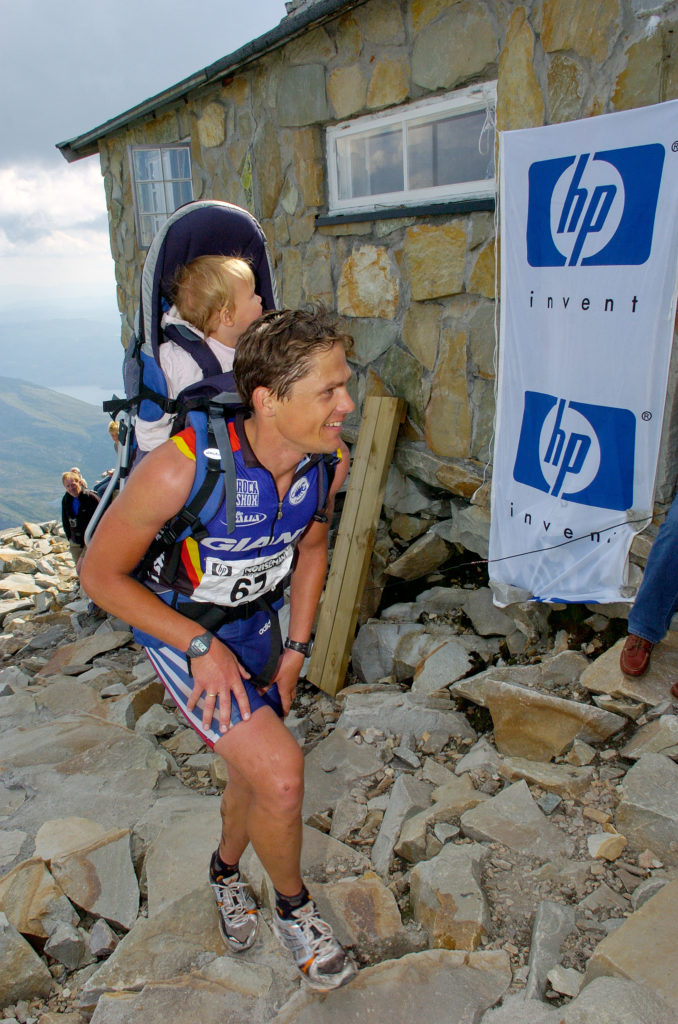
The national media were very interested in his participation, so the second year was actually great. Already we had international participation, we had good photos from the first year and we were good at publishing the news and the photos in the weeks after the first year. So the second year was a proper race!
Rune Høydahl performed remarkably and he won by far!
One more thing that was cool about the second year, was that the editor of a German travel magazine called Jens, who was a fan of Norway, because his family always visited for summer holidays, covered the race.
Jens greatly helped us, because he wrote that Rune Høydahl achieved a world class performance, which obviously he didn’t. Rune had a very good performance, because it was really harsh cycling conditions in the second year and he was still fast, but he wasn’t world class.
However, our friend Jens wrote that Rune achieved a world class performance and this gave us attention amongst the triathlon pros. The one person that came to show Jens that he was wrong the following year, was Swedish pro triathlete Bjorn Andersson.
Bjorn Andersson was the coolest triathlon pro in the world at the time. He was by far the fastest cyclist and usually ruined his race during the run leg. However, he was so annoyed by the German magazine saying that a Norwegian had achieved a world class performance, that he decided to race in 2005 and show them what a real world class performance looked like. So he came.
2005 was just so good. Bjorn biked 47 minutes faster than the second fastest athlete, who was also a fast athlete. It looked like he was riding a motorbike and he also ran fast. As I said, he always ruined his races on the run leg, but this year was so cold and it appeared that his physique favoured this cold weather over warmer temperatures. This day was his magic day, when everything just fitted together and he was able to run fast for for the entire race.
The weather was bad and Mount Gaustatoppen was really turning ugly when he was arriving at the finish. I must say, I was responsible for security that year and I was desperate about seeing Bjorn finish on top of the mountain, so we couldn’t close the mountain.
We gave him a guide, because it was getting foggy and in retrospect, it wasn’t safe, it wasn’t a good idea, but it gave us the photos of Bjorn finishing on top of the mountain, in the snow, at a fabulous time. That gave us so much good media coverage and after the third year in 2005 we had really established Norseman as an important, true and unique race in triathlon.
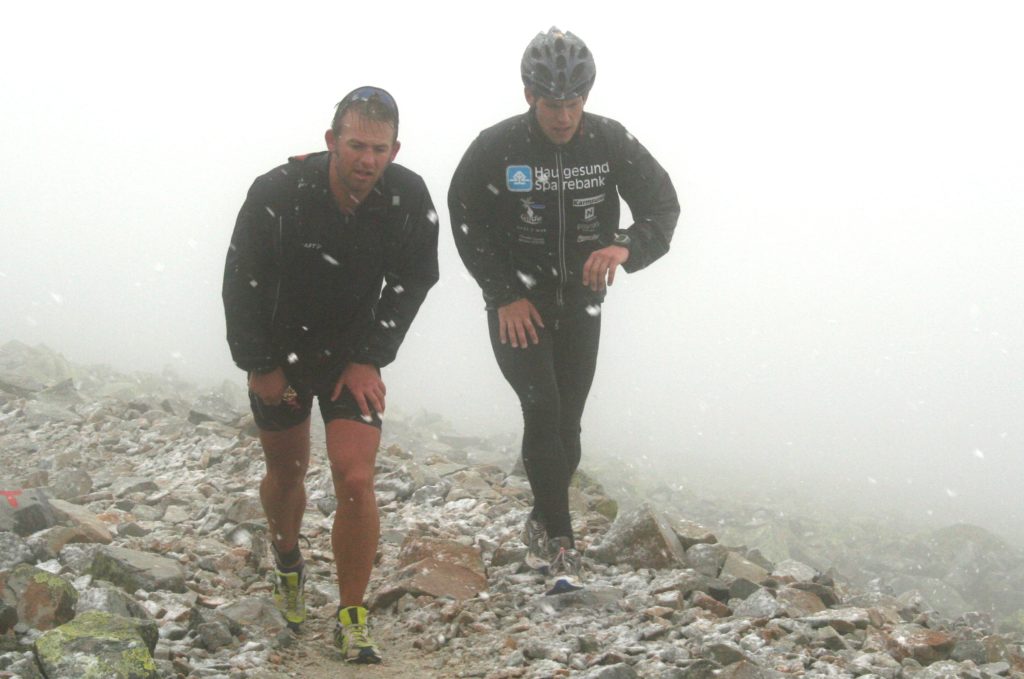
Adelaide: How has Norseman transformed since 2001 and 2005, to today?
Hårek: I think that Norseman is very much the same as it was the first year. The important parts of the race are the same and the good things have been kept, like the culture, the idea and the atmosphere, but it is now a professionally driven, proper good race.
Adelaide: Talking about how professional Norseman is now, you mentioned you had some really funny and silly stories about things that you tried, but that didn’t really work out. What was the number one thing that you tried, that you thought would be a really great success and it just completely failed instead?!
Hårek: I think the most silly thing we did was in 2004. It was my idea that you have to finish at the top of the mountain. Norseman is all about getting to the top of the mountain. You cannot think about the race without finishing at that mountain top, which turned out to be too strict.
The second year in 2004, we let the late participants walk up the mountain in groups of 8-10 people and some had to wait 30 minutes before they could walk up the mountain together. This meant that the last finisher came in after 22 hours, well after midnight.
I also guided the very last group of finishers and it was completely dark, we had no proper headlights and I misguided them! The guys at the top had to come down to find us and help us reach the cabin at the top of the mountain.
We didn’t do that afterwards. Within the next year, we introduced the finish of the run at 1000m – not going to the top. It’s a mountain and the weather can really turn ugly fast. It could be a beautiful day and within the hour, you could have fog, wind, rain, and in 2005 even snow.
Adelaide: What’s your favourite part of Norseman?
Hårek: I just enjoy doing the race so much. I am the most happy when I’m 2-3 hours into the cycle. Then I am so happy, I’m always singing out loud and I ruin my race, because I push too hard. I believe this is the best day of my life, I have never been as fit as I am today, today’s the day for the first time in my life that I can really push hard all day, and it turns out every time get some kind of psychotic high!
My absolute favourite part is when you bike the mountain plateau at Hardangervidda, that’s when I’m the most happy.
Adelaide: How many times have you raced Norseman now?
Hårek: 10 times
Adelaide: Wow! What keeps you coming back for more?
Hårek: I just enjoy doing this race so, so much. So it’s sad going into Autumn and Christmas and I haven’t done the race. It’s not a good year really. Most or perhaps half of my races I’ve done at the crew race. One year I even did the crew race completely alone. I’ve also done Norseman in winter. I just love this trip. So I’m coming back just because I love this experience so much, from the ferry to the mountaintop.
Adelaide: How did your race last year [2018] differ to other experiences you’ve had when racing Norseman?
Hårek: Last yearwas a disgrace. In April I overtrained. I felt so fit. Most of the time I feel I live a healthy, long term triathlete lifestyle. I like to train seven hours a week, I’m not over doing it, it’s just a part of my lifestyle. I don’t have a great talent, so I don’t need to perform particularly well, I just love this lifestyle.
But every now and then, I happen to get too eager, too optimistic and too happy about the training and then I want to do nothing but train. That happened in April and May last year [2018]. So at the end of May, I really hit the wall and I should not have started Norseman last year, because I knew I was in terrible shape all summer, so I got a white t-shirt.
I was number 160 until the last bend. I was struggling so hard and I thought I was going to make it. In my head I was in like an American movie, where I was the hero, because I’d just made the black t-shirt cut-off. But I didn’t. I was overtaken and lost my black t-shirt at the last bend and I hated it.
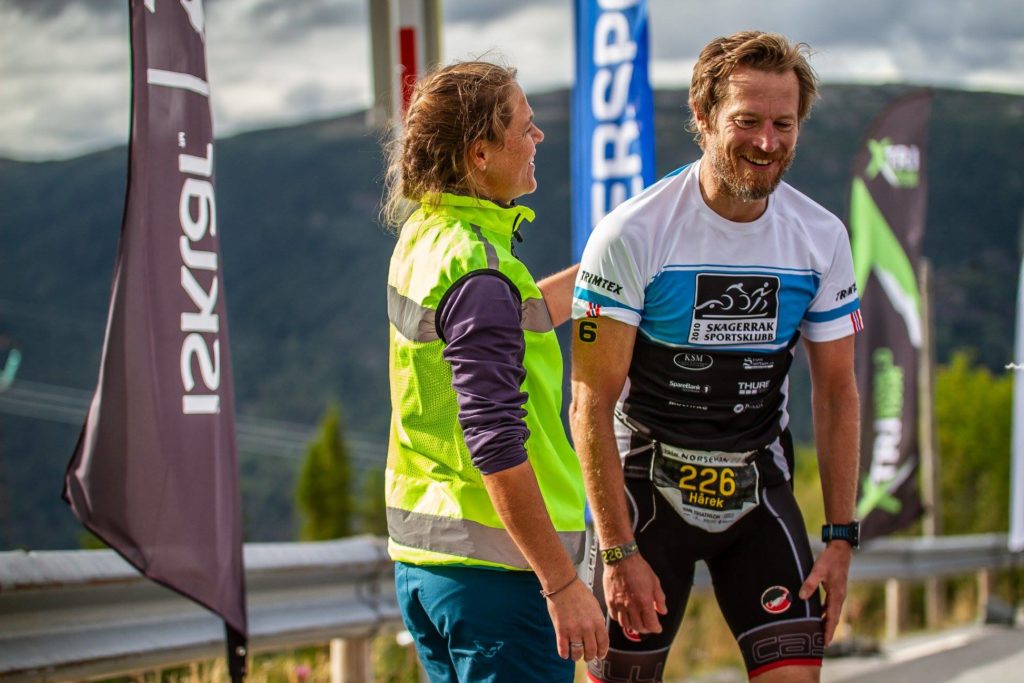
I’m really not too proud about my own reaction to it, but I wanted that black t shirt so much last year and it turned out to be white. I’m not doing the race this year [2019]. I think I need one year break to come back faster.
I’m 52 now and as I said, I don’t really have a particular talent for doing triathlons or any other sport, so I belong to the 160-ish participants now.
In a good year, I should be fit enough for getting the black t-shirt and in a bad year, I will not get it and last year I didn’t get it.
Adelaide: What would be your number one piece of advice for those who are in a similar position to you this year?
Hårek: Having a Norseman slot should make the entire year great for you. You should just be happy about it. You should try not to make silly mistakes, don’t over train and don’t be too worried, make it something positive.
Some of you might have been queuing for this slot for 10 years and this time, you’ve got a slot, you’re going to Eidjford and make it a wonderful experience. You’ll also probably be more successful if you’re not too focused and too worried about getting the black t-shirt. It’s going to be a great experience. So just relax and enjoy it. You’re fit enough.
Adelaide: With those entering Norseman this year and having watched it progress over the last several years, what do you believe to be important? Is it training smart and training hard? Is it talent? Or is it a little bit of both?
Hårek: First, I would say that it looks like the start field is getting faster and more fit. In the early years, it was not really a very fit start field.
I’m quite sure that your performance is a result of both talent and the effort you make. I really don’t believe in the concept that you can win something, or be top 10 without a great talent. I think it is almost disrespectful to the rest of us, to claim that you placed top 10, but don’t have a great talent for doing this. It is not true.
We are part of nature and we have different levels of talent, and that comes into play for all kinds of sports, including endurance sports. Those who really perform well, were given a great talent.
There will also be people who have a physique that doesn’t really respond to training and that is bad luck for them. I would say that they will not get that beautiful black t-shirt. Most of us have been given more of an average talent for doing this.
With an average talent, you can train as hard as you like and you will still not win anything. However, you can enjoy the lifestyle, sports, training and racing.
I think it is very meaningful for normal people, like myself, to do long distance sports, like train for Norseman as part of a lifestyle. It is very enjoyable. I think it is healthy and it makes me happy doing it.
However, you have to accept yourself, accept your own talent and accept that you’re not going to win. My body doesn’t respond to training in such a way that I could be extremely fast, it wouldn’t take it. So if I try to train like the most talented, then I just break down. I think I have the mental interest to train hard, at least in periods, but my physique doesn’t take it.
Adelaide: Thank you, that was really great. If someone is thinking of entering Norseman, but they do see it as such a impossible challenge, what would be your advice for them?
Hårek: I think you should apply for the slot and if you get it, you should just be happy about the opportunity. You should come to Eidfjord, you should go on that ferry and you shouldn’t be too worried. You should give yourself a wonderful day and go for the white t-shirt and be proud of yourself.
Adelaide: Unfortunately, we’re now out of time and have to wrap up with a quick fire round. So here we go! When you think of Norseman, what’s the first thing that comes to mind?
Hårek: It’s just such a beautiful day, friendship, the experience of doing it together with your support and the wonderful crew. It’s a different kind of life I would say.
Adelaide: Our final question, which three athletes would you love to see compete in Norseman?
Hårek: The first athlete I’d like to see is Chris McCormack (two-time winner of the Ironman World Championship), he was my triathlon hero and he’s the one that I always dreamt of seeing doing the race. So that would still be great.
I’m Norwegian and cross-country skiing is such a silly little sport, that interests nobody else outside Norway and Sweden, but that is where the top Norwegian talents go. The coolest of all these cross-country skiers is Petter Northug. He has recently retired and of course, this Petter Northug should do the race!
The third, I don’t know. Bjorn Andersson in a very fit comeback perhaps.
Adelaide: In the context of everything that we’ve spoken about today, is there anything else that you would like to add?
Hårek: I’m still overly optimistic about Norseman. It’s now in its 17th year and Norseman still feels like a very young event.
It’s still in its early years and even thou it has become a wonderful, great event, that people know all over the world, and it’s driven very professionally, I believe it still has huge potential.
I plan on staying around for another 40 years to enjoy watching and following the race, to see what it’s going to become.
I believe that the futures of both Norseman and the other xtreme triathlon races in the XTRI World Tour have a great future. I am really looking forward to follow them!
Adelaide: Very quickly, where do you see Norseman in 10 years time?
Hårek: I think that Norseman will become a proper World Championship race, with excellent professionals fighting for the win and with helicopters in the air. That is my my dream, seeing the helicopters and the crowd up Zombie Hill.
Adelaide: Great! Well thank you so much Hårek, it has been absolutely fabulous talking to you and I can’t wait to follow Norseman this year and see you there!
——-
About Adelaide Goodeve
Adelaide is a member of the Norseman media team and teaches pro and first-time triathletes how to sharpen their most under-utilised tool at their disposal: their brain, empowering them to achieve extraordinary performance.
Find more about Adelaide here.
About Hårek Strainheim
Hårek is the founder of Norseman and is a regular on this challenging, much loved course. Since the first race in 2001, Hårek has competed in Norseman 10 times, achieving both the black and white t-shirts.
When not training for or racing Norseman, you can find him coming up with more crazy sporting ideas, like a 24-hour mountain bike race around a horse racetrack!
——-
About Norseman Radio
If you’d like to listen to interesting and intriguing stories around the Norseman Xtreme Triathlon and fully immerse yourself in the experience, then Norseman Radio is for you.
This podcast is not just for those who’d like to jump off the car ferry into Eidfjord and run up Zombie Hill.
You can find Norseman Radio on:
- Itunes
- Spotify ( spotify:show:6EYT3ozFRtBwW59eG3kZpM )
- iHeart Radio (coming soon)
- Spreaker
- Google Podcasts
- Castbox
- Deezer
- Podcast Addict
- Podchaser
Connect with us on Instagram, Facebook, on our website and by signing up to our email newsletter!
